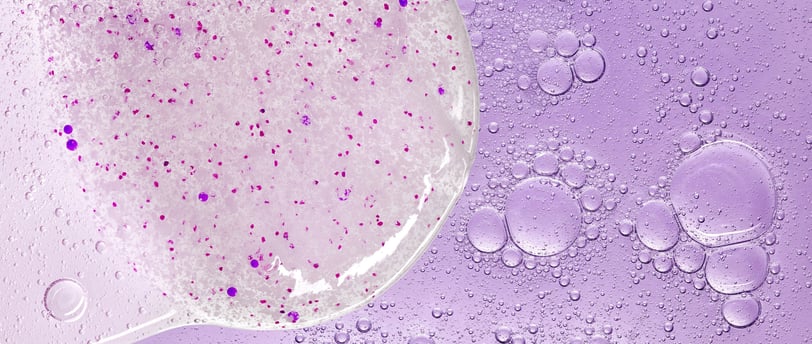Micellar Water vs. Regular Cleanser: What’s the Real Difference?
Choosing the right cleanser is the first step to healthy, balanced skin. Two of the most popular options micellar water and traditional water-based cleansers, both promise to remove impurities, but they work in different ways and suit different needs. Here’s what sets them apart and how to know which is right for you.


What Is Micellar Water?
Micellar water is a gentle, no-rinse cleanser made of purified water, hydrating ingredients (like glycerin), and tiny clusters of surfactant molecules called micelles. These micelles have a unique structure: their outer layer attracts water, while the inner core attracts oil and dirt. When you swipe micellar water over your skin with a cotton pad, the micelles act like magnets, lifting away makeup, oil, and daily grime—no harsh scrubbing or rinsing required.
Key Benefits of Micellar Water:
Removes makeup, dirt, and oil effectively—even invisible impurities
Gentle and hydrating, usually free from harsh chemicals or alcohol
No need to rinse; perfect for travel, quick cleansing, or sensitive skin
Leaves skin feeling soft and soothed, not tight or dry
Suitable for all skin types, especially sensitive or dry
Drawbacks:
May not remove heavy or waterproof makeup as thoroughly as oil cleansers
Can leave residue if not wiped away completely (though some brands are designed to be left on)
Not as deep-cleansing as foams or gels for very oily or acne-prone skin
What Is a Regular (Water-Based) Cleanser?
Water-based cleansers include gels, foams, creams, and milks. They use surfactants to create lather or a creamy texture that binds to water-soluble impurities like sweat, dirt, and pollution, rinsing them away with water. Unlike micellar water, these cleansers almost always require rinsing.
Key Benefits of Water-Based Cleansers:
Deeply cleanse pores and remove sweat, dirt, and excess oil
Often come in formulas tailored for oily, dry, sensitive, or acne-prone skin
Leave skin feeling refreshed and thoroughly clean
Essential as the second step in double cleansing (after oil-based or micellar cleansing)
Drawbacks:
May be too drying for some skin types if they contain strong surfactants
Require access to water and a sink—less convenient for travel or on-the-go
Not always effective at removing heavy makeup or sunscreen on their own
When to Use Each
Micellar Water:
Best for quick cleansing, makeup removal, or when you don’t have access to water (travel, gym, late nights)
Great as a morning cleanse or for sensitive skin that reacts to traditional cleansers
Can be used as a first step before a regular cleanser for double cleansing
Regular Cleanser:
Ideal for deep cleansing at the end of the day, especially if you have oily, acne-prone, or combination skin
Essential for removing sweat, pollution, and water-based impurities
Should follow micellar water or oil cleanser if you wear heavy makeup or sunscreen
Why Removing Impurities Matters
Throughout the day, your skin collects oil, sweat, dirt, and environmental pollutants. If not properly removed, these impurities can clog pores, cause breakouts, and prevent your skincare products from working effectively. Both micellar water and traditional cleansers help maintain clear, healthy skin by removing these unwanted particles.
In summary:
Micellar water is gentle, convenient, and perfect for quick cleansing or sensitive skin, but may not deeply cleanse or remove heavy makeup as well as other options.
Regular water-based cleansers provide a deeper clean and are essential for thoroughly removing daily buildup, especially as part of a full skincare routine.
Choosing the right cleanser depends on your skin type, lifestyle, and personal preferences. Many people find the best results by combining both: micellar water for quick or first-step cleansing, and a traditional cleanser for a complete, refreshing clean.
